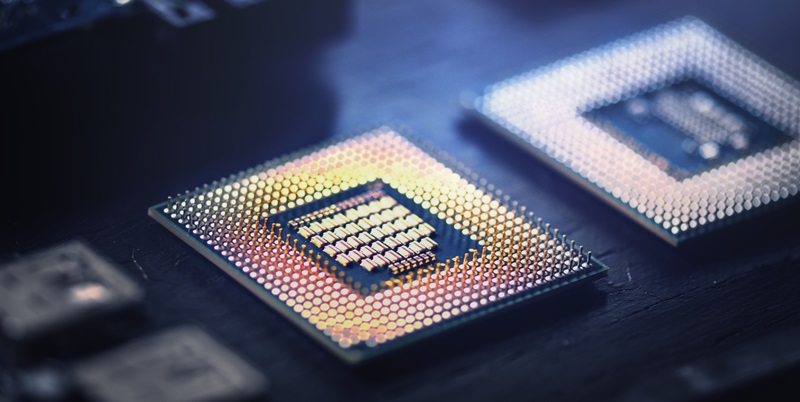Intel recently made a significant splash in the world of high-performance computing (HPC) with the announcement of its sixth-generation Xeon CPUs, known as Granite Rapids. Unlike its predecessors, which often provided incremental improvements, Granite Rapids represents a major leap forward in both performance and efficiency. This new line of CPUs, exclusively equipped with performance cores (P-cores), is set to replace the fifth-generation “Scalable Xeon” Emerald Rapids CPUs. These advances indicate Intel’s ambition to redefine the standards in the data center space.
A pivotal feature of Granite Rapids is the use of Intel’s cutting-edge Intel 3 process, a 5nm manufacturing technology, replacing the older Intel 7 process that used 10nm technology. This shift allows for a notable increase in core counts, with the flagship models boasting a staggering 128 cores per CPU, double the previous generation’s maximum of 64 cores. Utilizing the new Redwood Cove P-core architecture, Granite Rapids offers an uplift of 1.2x per core and promises 1.6x higher performance-per-watt compared to its predecessors, setting a new benchmark for energy efficiency in HPC.
Architecture and Performance Enhancements
Granite Rapids CPUs are not just about higher core counts; they come with a slew of improvements that make them stand out. Intel has announced five specific models under the Granite Rapids line, with core counts ranging from 72 to the top-tier 128. Each model features 96 PCIe lanes and supports advanced memory technologies like DDR5-6400 or MRDIMM 8800, as well as 12 memory channels. This advancement in core count is complemented by support for modern, high-speed memory and I/O capabilities, making the Granite Rapids CPUs well-suited for data-intensive applications and HPC workloads.
Scalability Options
Despite dropping the “scalable” nomenclature, Intel still allows for scalability through different tile configurations. The most powerful models utilize three tiles to achieve the 128-core configuration, while other models use fewer tiles to offer more cores for varied performance needs. For instance, models with two tiles can have 86 cores, while single-tile options can offer 48 or 16 cores, allowing data centers to choose the right fit for their specific demands.
Performance Superiority
One of the most talked-about aspects of Granite Rapids is its claimed performance superiority over AMD’s Epyc CPUs. Intel asserts that Granite Rapids offers over twice the performance on a range of HPC tasks compared to AMD’s competing offerings. This leap not only addresses the existing core gap between Intel’s previous-generation CPUs and AMD’s Genoa chips, which maxed out at 96 cores, but also positions Intel ahead in the core count race—at least until AMD releases its 128-core Epyc Turin CPUs based on the Zen 5 architecture.
It’s a bold statement, but if substantiated, it underscores Intel’s aggressive strategy to claw back market share from AMD. Granite Rapids’ release just nine months after the preceding Xeon iteration also illustrates Intel’s commitment to rapidly innovate and remain competitive.
Future Implications and Competitive Landscape
Intel recently made a notable impact in the field of high-performance computing (HPC) by unveiling its sixth-generation Xeon CPUs, named Granite Rapids. Unlike previous versions that often saw minor upgrades, Granite Rapids signifies a significant leap in both performance and efficiency. These new CPUs are exclusively fitted with performance cores (P-cores) and are poised to replace the fifth-generation “Scalable Xeon” Emerald Rapids CPUs, reflecting Intel’s ambition to reset the bar in the data center industry.
A key feature of Granite Rapids is its utilization of Intel’s advanced Intel 3 process technology, a 5nm manufacturing process, up from the older 10nm Intel 7 process. This technological advancement allows for a substantial increase in core counts, with flagship models offering an astounding 128 cores per CPU, doubling the previous generation’s peak of 64 cores. Incorporating the new Redwood Cove P-core architecture, Granite Rapids achieves a 1.2x performance boost per core and delivers 1.6x better performance-per-watt, thereby setting new standards for energy efficiency in the HPC sector.

